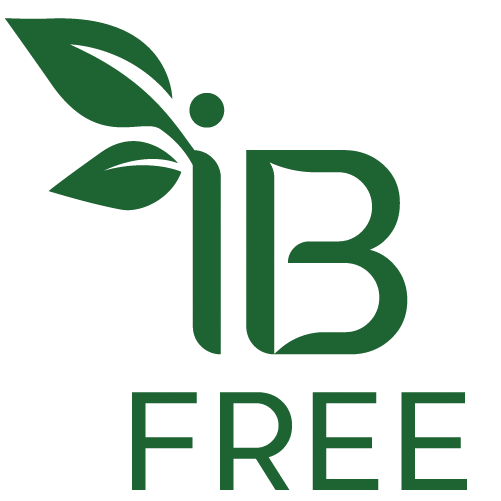Top 10 Worst Foods and Drinks for IBS
IBS turns the ordinary act of eating into strategy. What looks wholesome on paper—fruit, whole grains, a splash of yogurt—can be a disaster in practice. While triggers vary person to person, some culprits trip up many people with IBS because they’re dense in FODMAPs (fermentable carbs) or otherwise rough on the gut. Use this list as a starting map—and personalize from there.
(If FODMAPs are new, begin with our primer: Understanding FODMAPs. For a gentler template, see A Diet for IBS Relief and why staples like onion/garlic/wheat often misbehave: read more.)
1. Alcohol (beer, wine, and mixed drinks)
Alcohol can irritate the gut lining, alter motility, and worsen diarrhea or urgency. Many alcoholic drinks also carry a FODMAP burden—beer (barley/fructans), certain sweet wines, and mixers with high-fructose sweeteners (Monash FODMAP: alcohol overview).
2. Dairy products (milk, soft cheeses, ice cream; even some “lactose-free”)
Lactose is the classic issue, but even with lactose removed, some people still struggle (fat content can influence motility; additives can add FODMAPs). Aged hard cheeses have less lactose and are often better tolerated; consider lactose-free or alternatives as needed (Harvard Health: living with lactose intolerance).
3. Caffeinated drinks (coffee, strong tea, energy drinks)
Caffeine is a GI stimulant and can hasten transit; energy drinks often add polyol sweeteners (sorbitol, mannitol) that are high-FODMAP (Monash FODMAP: high/low foods list).
4. Artificial (polyol) sweeteners and “sugar-free” products
Sorbitol, xylitol, mannitol, and similar sugar alcohols are poorly absorbed and ferment in the colon, causing gas and diarrhea—even in small amounts for sensitive folks. These lurk in gum, mints, “diet” drinks, protein bars, and some “sports” products (Monash FODMAP blog: polyols & sweeteners) and see our explainer: Sugar Substitutes & IBS.
5. Gluten-containing wheat foods (bread, pasta, crackers)
For many with IBS, the bigger villain isn’t gluten per se but fructans (a FODMAP) in wheat. These ferment rapidly, producing gas and discomfort. Swapping to rice, oats, quinoa, or cornmeal products often helps (Monash high/low list).
6. Beans, lentils, and (often) sweet corn
Legumes are rich in GOS (a FODMAP) and can be highly gas-producing. Canned/rinsed versions lower GOS somewhat but can still be tough. Sweet corn’s insoluble fiber plus FODMAPs can aggravate bloating or urgency in some people (NIH/PMC review on legumes & oligosaccharides; Monash high/low list).
7. Cruciferous vegetables (broccoli, cauliflower, cabbage)
Nutritious, yes—also frequent offenders thanks to fructans and/or polyols, and a fiber profile that ferments vigorously. Small, well-cooked portions may be tolerated, but larger servings commonly trigger gas and bloating (Monash high/low list).
8. Spicy foods (hot peppers, chiles; onion/garlic as double-triggers)
Capsaicin can irritate sensitive guts and speed transit; meanwhile onion and garlic are among the highest-fructan foods—often problematic even in tiny amounts or powders. Use garlic- or onion-infused oil instead for flavor without the fructans (Monash: onion & garlic entries; IB-Free guide).
9. Fried and fatty foods (deep-fried items, greasy meats; watch seed oils)
Fats are low-FODMAP but can alter gut motility and worsen symptoms when eaten in excess; deep-fried foods add mechanical irritation. Many people find simpler, baked/boiled preparations more predictable (Monash FODMAP FAQ on fats & oils).
10. Certain nuts and seeds (especially cashews and pistachios)
Portion size matters, but some nuts are high-FODMAP even in small amounts: cashews and pistachios top the list. Others (walnuts, pecans, macadamias) can be tolerated in small servings; fiber load and overeating are common confounders (Monash high/low list).
How to use this list (so it actually helps)
Change one thing at a time. Replace a known trigger with a low-FODMAP alternative and watch symptoms for a week.
Mind the serving size. Even green-light foods can trigger symptoms when portions “stack.” (Monash on FODMAP stacking)
Keep a brief log. The “which food, how much, how soon” pattern emerges quickly.
Work toward personalization. The low-FODMAP diet is a short-term learning tool (2–6 weeks elimination), followed by reintroduction and a tailored long-term plan (Monash: not a lifetime diet).
